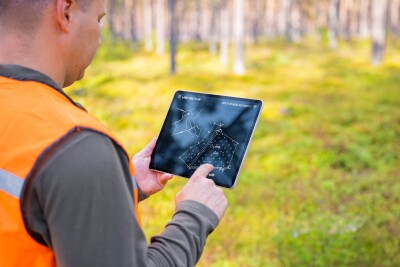Anybody used to play Stratego? I loved that game. Basically, I’d always just put the flag in the corner surrounded by bombs and the lowest-numbered guys I could spare and play a totally defensive game, hoping the other player would get impatient (but, wait, why am I telling you that? So, dumb…). Anyway, you may be interested to know that, nowadays, even Stratego is using 3D data capture.
No, not for hyper-realistic board pieces (though that would be cool), but rather as part of a cool marketing campaign that Spin Master toys commissioned this year. As part of the 140-second piece of animation that Brain Zoo Studios created to hype the game, full of a futuristic battle between the red and blue armies, the company actually scanned their own faces with a NextEngine scanner to create hyper-realistic facial texture and expressions:
The trailer features a new addition to our repertoire – Next Engine‘s 3D scanning technology – which captures a wide range of facial expressions to enable the on-screen characters to speak and interact with each other in a realistic and emotional way. We held internal auditions among our own artists and TDs to decide who should ‘appear’ in the trailer (with a special guest appearance from one of Spin Master’s own producers as the scout).
I assume at this point I’m not the only one thinking about how cool it would be to have my face on the scout… Brain Zoo provides some pretty interesting detail about their work-flow, actually:
In addition to compiling multiple scans into a series of blendshapes, the process involved capturing multiple HDR images to record skin textures. Our textures were captured at 2,048 x 2,048 resolution, with 10 HDRI references created per model to ensure our modelers and riggers had much more accurate reference material than normal to work with. Our ultimate goal was to give our characters a more human quality, with imperfections in their skin textures and facial structure.
After capturing the raw data, the software bundled with the Next Engine scanner easily imported the data into Maya for clean up. One of the biggest problems we faced was the sensitivity of the camera, since even breathing or small vibrations altered the resulting data when brought into Maya, and needed to be fixed on the spot.
The characters have bone-based facial rigs, supplemented with corrective blendshapes. Variants were created of key models, further enabling us to refine the data: for example, the Marshal was retextured to increase and decrease the apparent age of the original facial scan, enabling the team to create a keyframable ‘age’ blendshape slider.
Here’s the resulting piece of animation. Pretty impressive, if you ask me.
Okay, so the voice-over is a little corny. But how about those faces, right?
In the same vein, that John Carter movie might have totally bombed at the box office (I haven’t seen it – but I really wanted it to be good, so I’m holding out hope that it’s just over the heads of too many moviegoers or something), but it gets points here at SPAR for its use of Spheron’s HDR capture device. The Disney production employed a company called Double Negative to do the visual effects and they gave a pretty glowing endorsement of what Spheron can do:
“It addresses many onsite FX data gathering issues that had previously slowed down productions. The time it takes to survey sets and locations as well as shoot reference lighting data is always an imposition on the live-action crew as well a less precise practice. By using our Spheron Cameras, this process became a much more efficient and a more accurate all-round solution,” explains Ryan Cook … “The camera is also excellent at recording spatial data, using its 3D immersive measurement technology; it enables CG objects to be placed into any location – bridging the gap between the real world and computer graphics environments.
Ken McGaugh said, “Onset we captured both HDR light fields as well as making use of the cameras photogrammetric technology. This Photogrammetry element, which also records 3D points, has now been adapted into Double Negative’s workflow, by the in-house development of a unique 3D photogrammetric pipeline, using both the 32-bit image data and measurement features, so assisting further in the Virtual Set re-Construction process.”
See if you can catch the Spheron in action in this behind-the-scenes video:
Did ya see it? There’s a glimpse of it at about 3:20…
Regardless, just further proof that 3D data capture is infiltrating the world of Hollywood productions. Even if the movie is (uh, how did that guy at the BBC put it? Like baking your brain into a loaf of bread?) not the best, at least we know they were employing the latest technology in giving it a go.





